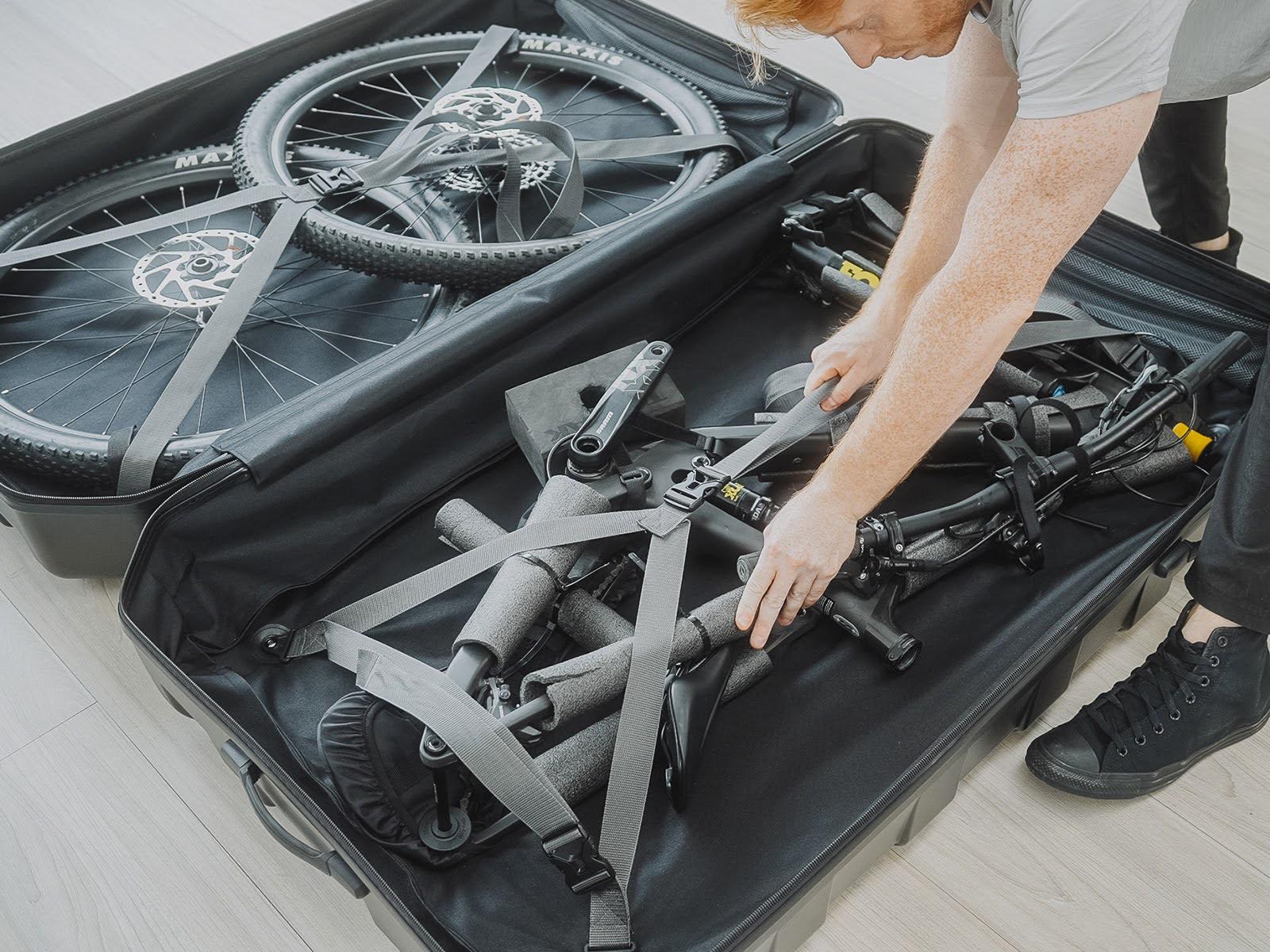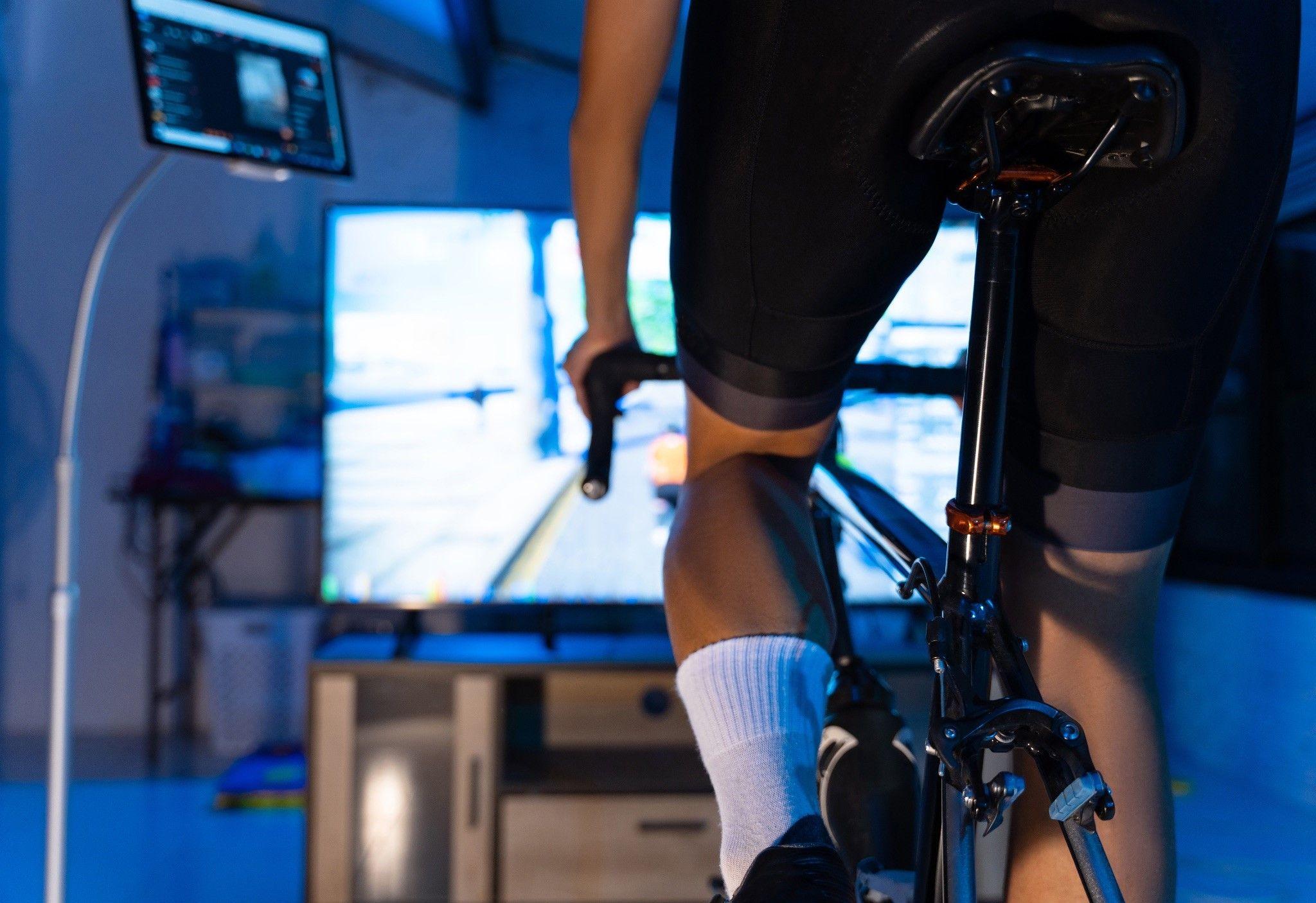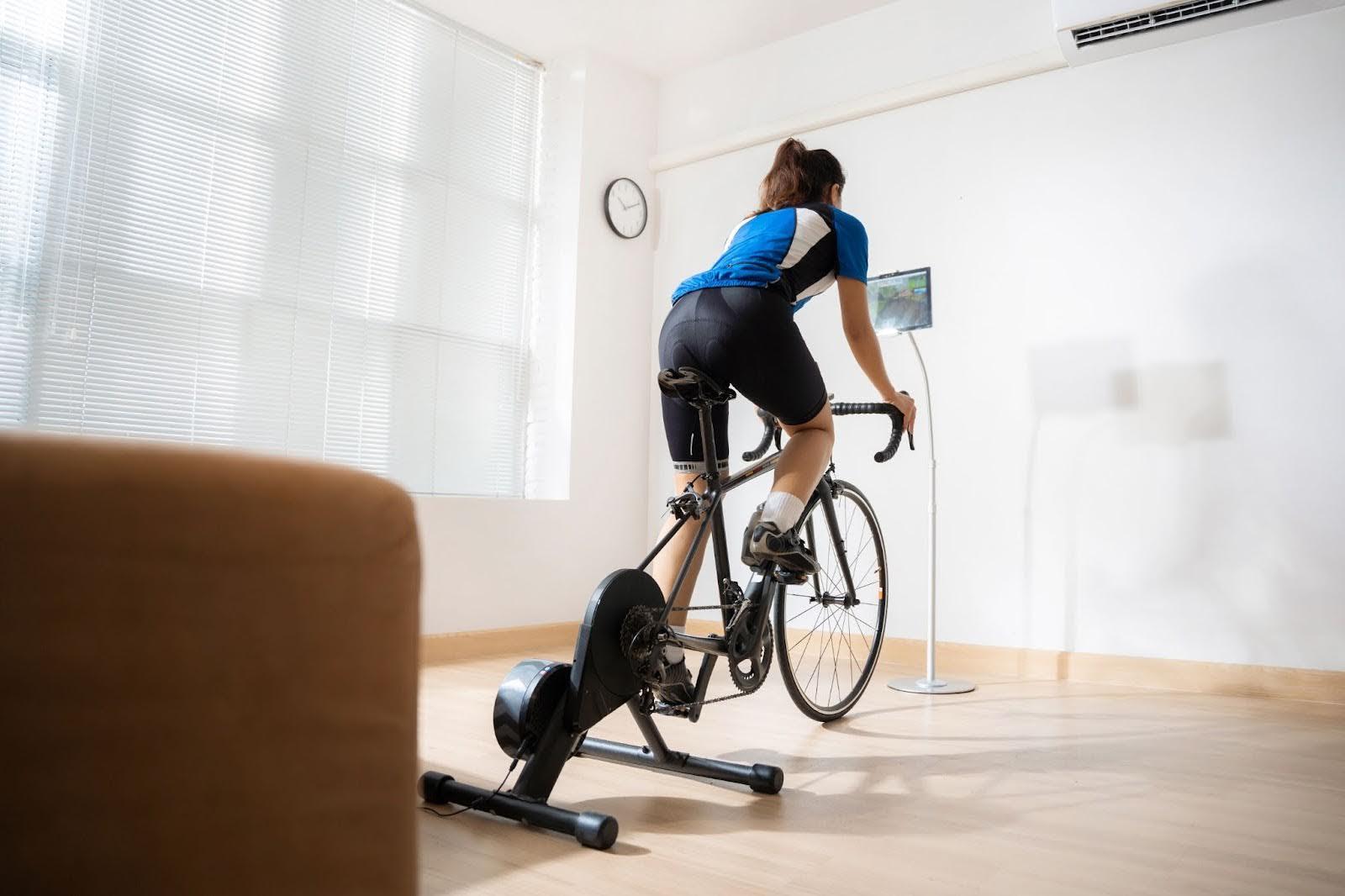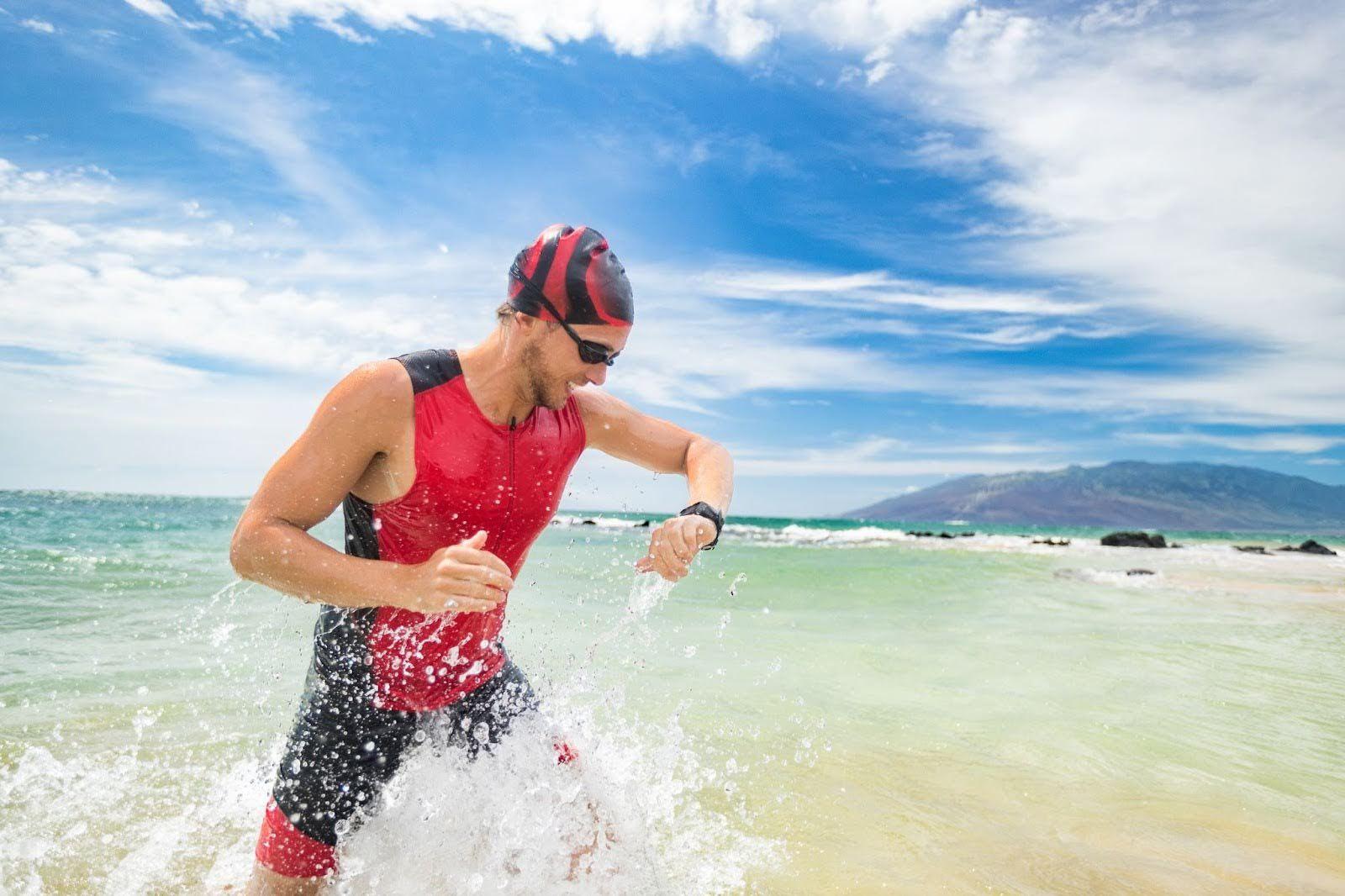From weekend explorers to everyday commuters, gravel bikes are gaining traction as the perfect solution for riders who want versatility beyond paved routes. As more riders look for ways to ride rural routes, escape traffic, and ride different terrains, gravel riding offers a level of freedom that road or mountain biking can't match. In 2025, the trend shows no signs of slowing down—in fact, gravel-specific events and bikepacking adventures are on the rise.

Gravel bike manufacturers are innovating and delivering lighter frames, better bike geometry, and smarter storage and gear integrations. The line between gravel bike and road bike is blurring, but riders are benefiting from this—there's now a gravel bike for every rider profile and budget.
So why this crazy growth? Riding gravel is inclusive, fun, and personal! You don't need perfect roads, race goals, or elite fitness. All you need is a sense of adventure and the right bike to match, which is where this practical best gravel bike buying guide comes in.
Why Gravel Bikes are the Ultimate All-Terrain Ride
A proper gravel bike is more than just a road frame with wider tyres. Modern gravel bikes are purpose-built to handle everything from smooth tarmac to gravel roads and singletrack. They're designed with versatility in mind, a balance of stability, efficiency and comfort, whether you're ripping through the woods or carrying gear across vast landscapes.
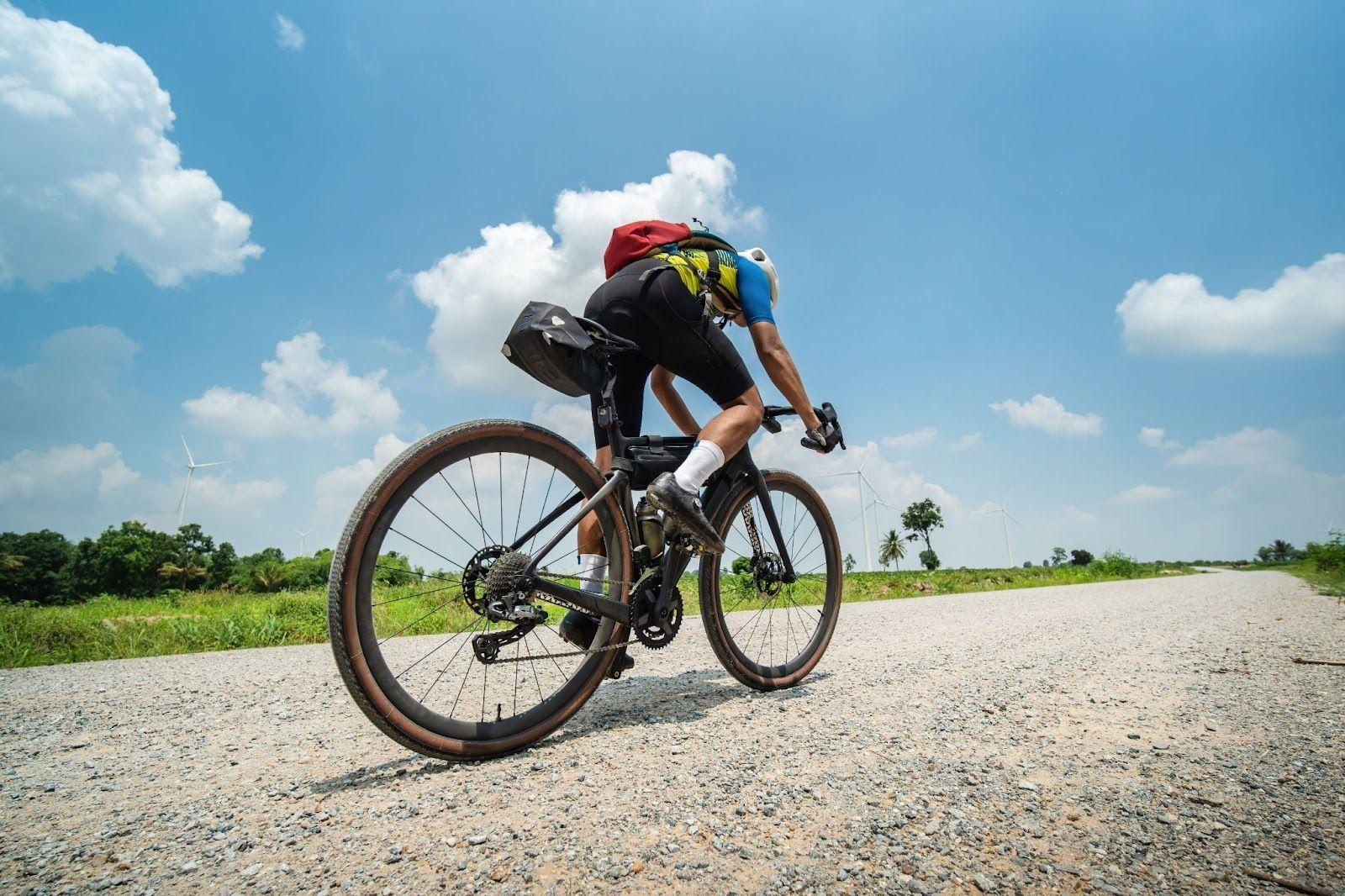
Unlike road bikes, which favour speed and stiffness, most gravel bikes come with wider wheels, relaxed geometry, and space for wider tyres. This gives better control on loose or uneven surfaces—perfect for off-road riding: rough gravel, sandy tracks, unpaved roads, and forest trails. And they're far more agile and efficient than mountain bikes, so they're perfect for long-distance travel and mixed terrain exploration.
In short, they sit at the sweet spot between comfort, capability and speed. From gravel racing bikes to adventure gravel bikes for touring, there's a gravel bike for every style of riding. Whether you're commuting, heading into the hills for the weekend or dreaming of a big bikepacking adventure, your bike will give you confidence, control and fun on almost any surface.
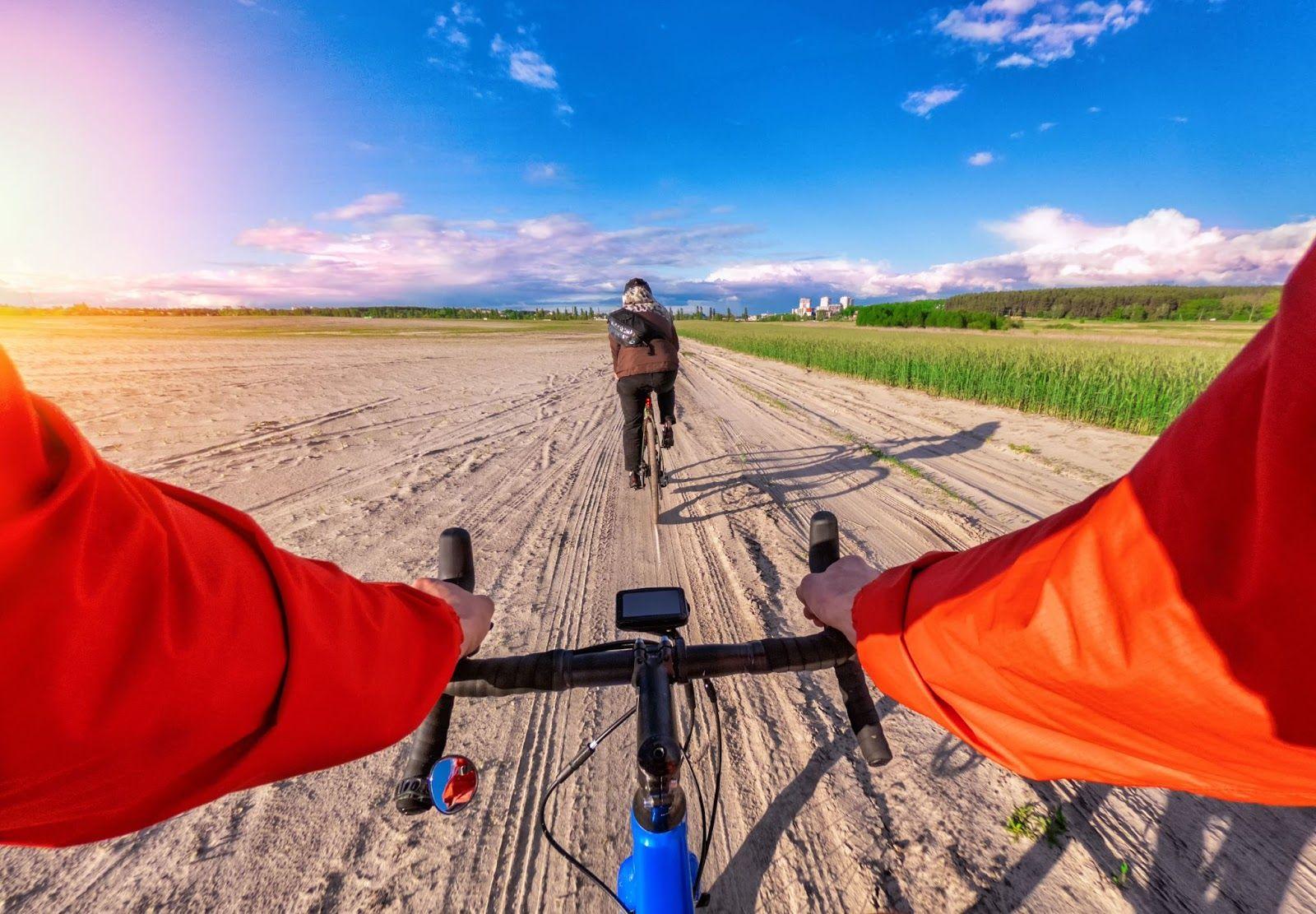
What Is a Gravel Bike?
This versatile, all-terrain bike can handle various surfaces—from smooth tarmac to dirt roads, rough gravel, and even some non-technical singletrack trails. Although it may look like a road bike at first glance, the design and components, on closer inspection, are purpose-built for stability, durability, and adaptability across unpredictable terrain.
Gravel Bikes vs. Road Bikes and Mountain Bikes
The most significant difference between a gravel bike and a road bike is tyre clearance and geometry. Gravel bikes can accommodate much wider tyres, up to 45mm or more, providing a better grip and shock absorption on rough terrain. This makes for a smoother, safer ride when riding off-road or tackling looser and rougher tracks.
The geometry is also different. It has a more relaxed head angle, longer wheelbase, and higher stack height than a road bike. This setup offers more stability and comfort over longer distances, especially when carrying gear or descending on uneven surfaces.
They offer advantages over mountain bikes, including being lighter, faster on flat terrain, and more efficient for long-distance rides. They don't have suspension forks, making them lighter, but many use a carbon fork with a damper to absorb vibrations without adding weight, making these bikes low-maintenance and perfect for long self-supported trips.
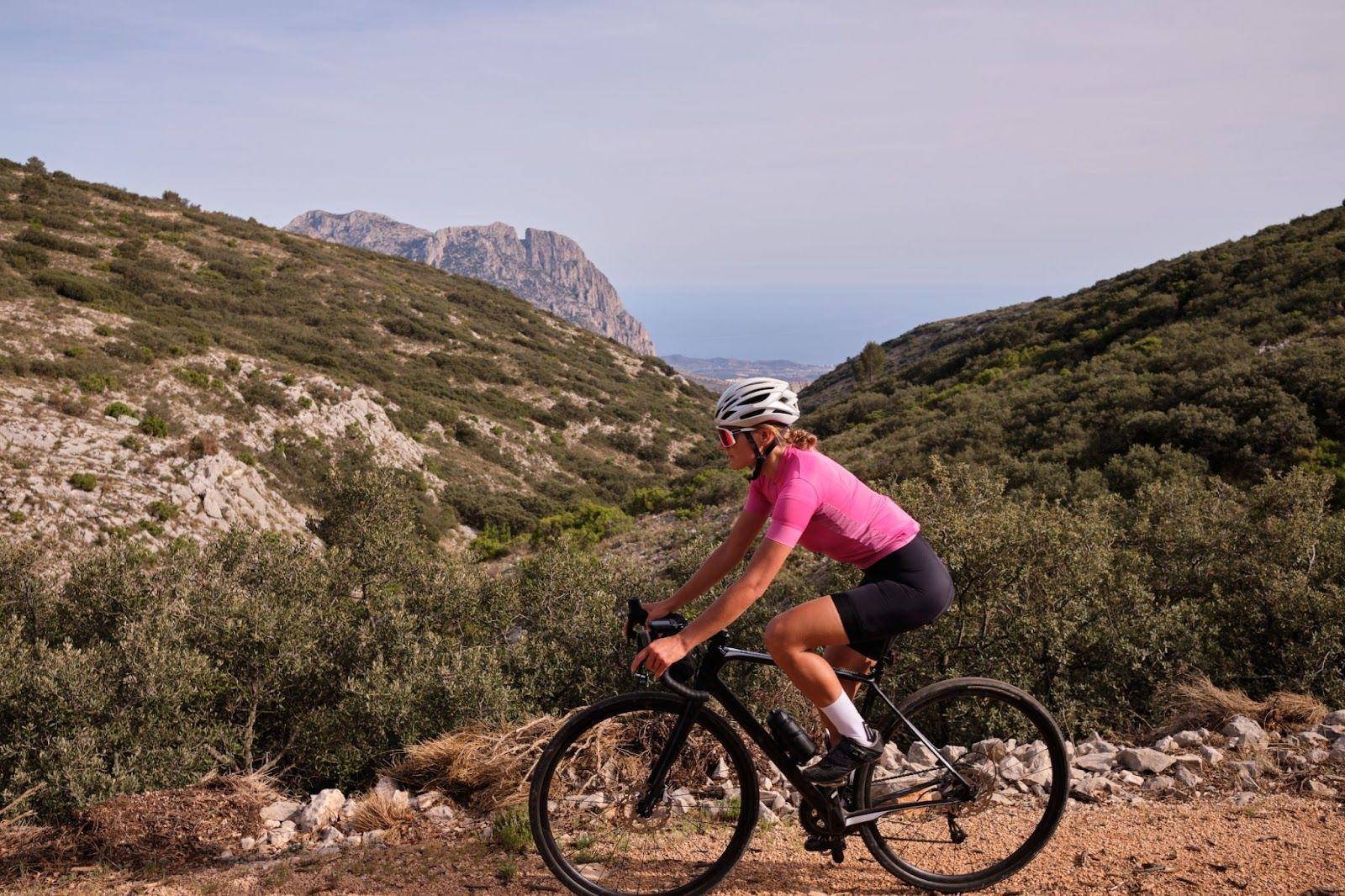
The Versatility and Benefits
The magic is its flexibility. Want to ride on the road? Fit slicker tyres. Planning a weekend camping trip? Add bike packing bags to the mounts and head out into the wilderness. Interested in local road races? Some lightweight models can manage high speeds, too.
Thanks to multiple mounting points, most models are compatible with racks, fenders, bottle cages, and frame bags, making them ideal for adventure gravel bikes or even daily commuting. Whether you want a fast gravel bike for racing or bikepacking, there's a model designed around your goals.
The best thing is that there's no one definition of what it is. It might mean racing across remote farm tracks, exploring forest lanes or simply enjoying the quiet of nature away from busy roads. And because most can be fine-tuned to your preferences — from gearing and tyres to handlebars and frame material — you can create the perfect setup for your ride type.
Tyre Clearance & Wheel Size of Gravel bike
The wheels are almost all 700c size, which has become the standard. These wheels offer better speed, efficiency, and rolling resistance on a wide range of surfaces, especially when paired with wider tyres up to 45mm or more.
650 B wheels, which allowed for even wider, higher-volume tyres, were once popular among backpackers and riders tackling rough gravel but are now far less common. Advances in 700c tyre design have generally replaced the need for smaller-diameter wheels, as modern frames now accommodate high-volume 700c tyres that offer similar comfort and grip.
Today, almost all bikes are standard with 700c wheels. For most riders, this is the preferred and more widely available option.
What is a Good Weight for a Gravel Bike?
Most are between 8.5 kg and 11.5 kg. Here's what you need to consider:
If you want a fast gravel bike for racing or performance, a sub-10 kg build — often with a carbon fork and lightweight components — is the way to go.
If you're into touring or carrying gear, they'll be a bit heavier, prioritising durability over lightness.
Electric bikes are the heaviest, usually between 13 and 17 kg, due to the motor and battery.
In general, a lightweight bike under 10.5 kg is the sweet spot for most riders — light enough for climbs and quick acceleration, yet strong enough for gravel, off-road and occasional loads. Weight isn't everything, but knowing how it affects the ride and efficiency can help you choose the best gravel bike for you.
Best Gravel Bikes 2025
With so many gravel bike types available, choosing the right bike can be daunting. To make it easier, I've handpicked specific models across the main categories, whether you're after speed, exploring, or getting started.
These trail-tested bikes, available in carbon and alloy gravel bike materials, are designed for a variety of riding styles and budgets. They excel beyond paved roads, and each trusted model boasts unique features.
Best Performance Gravel Bike for Racing
Cervélo Áspero 5 – A fast bike for racing snakes. Aero tube shapes, lightweight carbon frame and aggressive geometry for road bike efficiency on gravel. Clearance for 40mm tyres, made for speed on loose corners and fast straights.
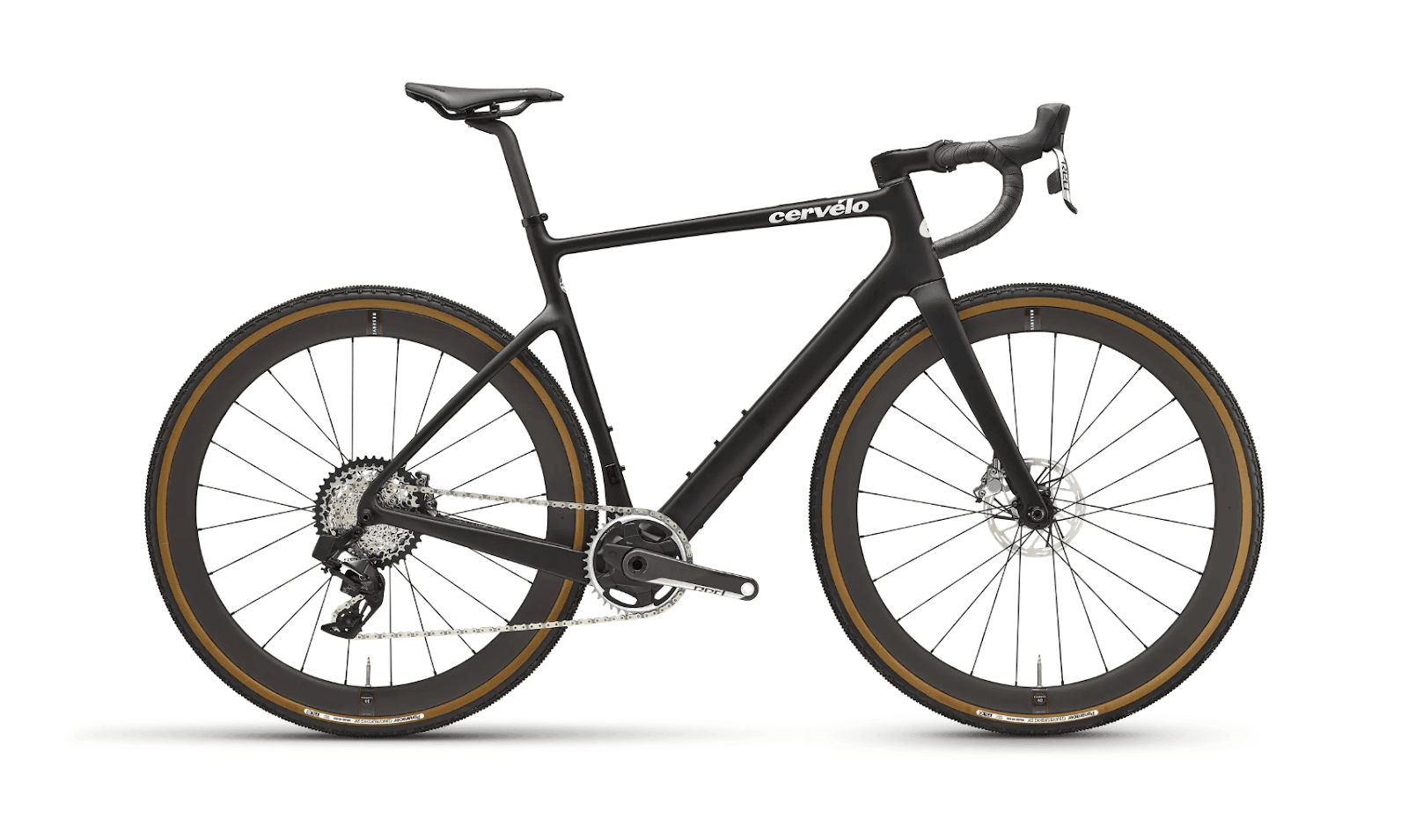
Best Gravel Bike for Adventure & Bikepacking
Bombtrack Beyond+ - A steel-framed adventure gravel bike with room for big tyres, the Beyond+ is a favourite among long-distance tourers and one of the best gravel bikes for bikepacking. It has triple bottle mounts, a wide gear range, and stable geometry for off-road expeditions and remote bikepacking missions.
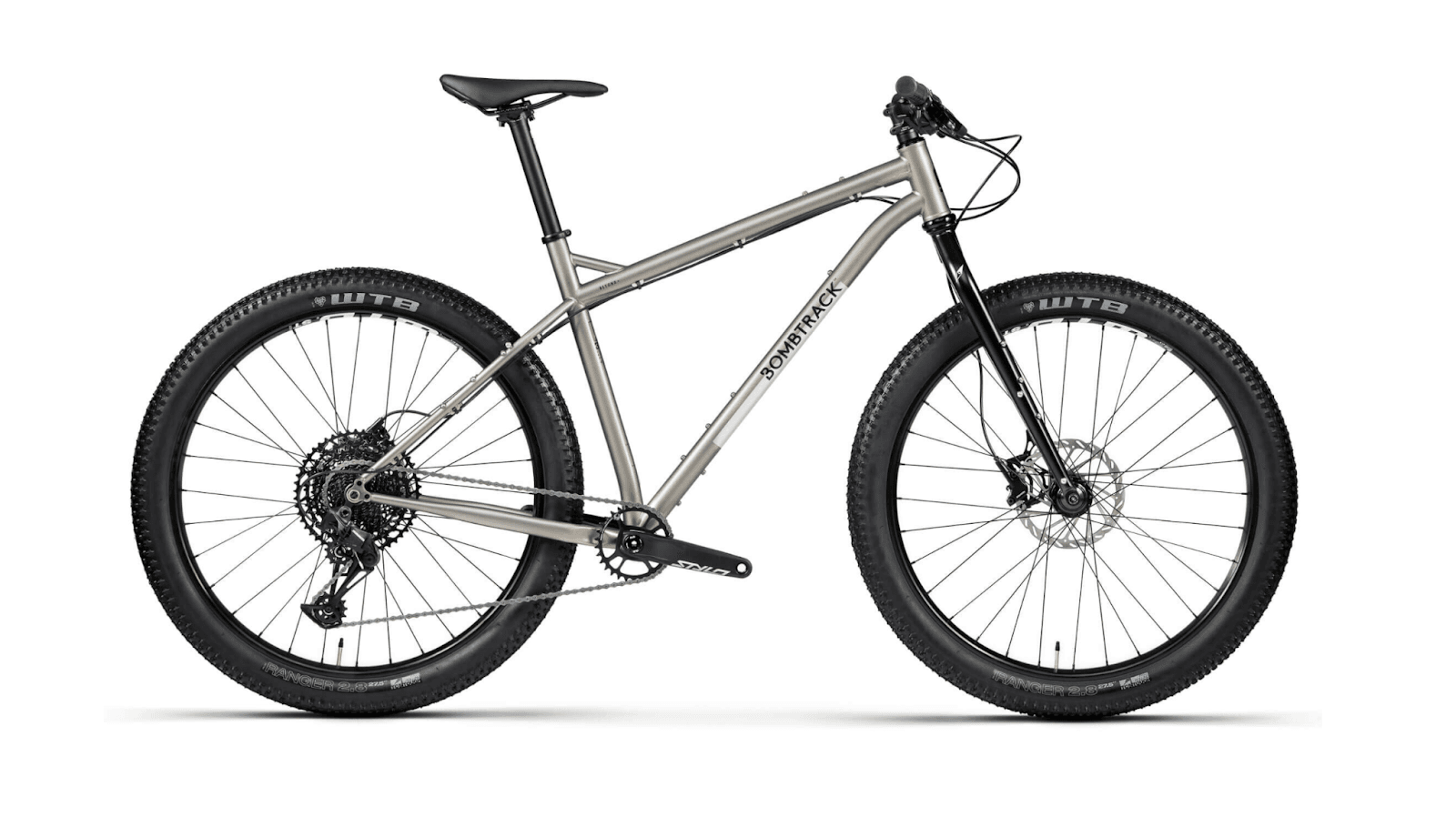
Best All-Round Gravel Bike for Versatility
Specialized Diverge Comp Carbon—Comfort and capability thanks to a carbon frame, Future Shock suspension damper and wide tyre clearance. Equally at home on the commute or ultra race for those who want speed and versatility in one package.
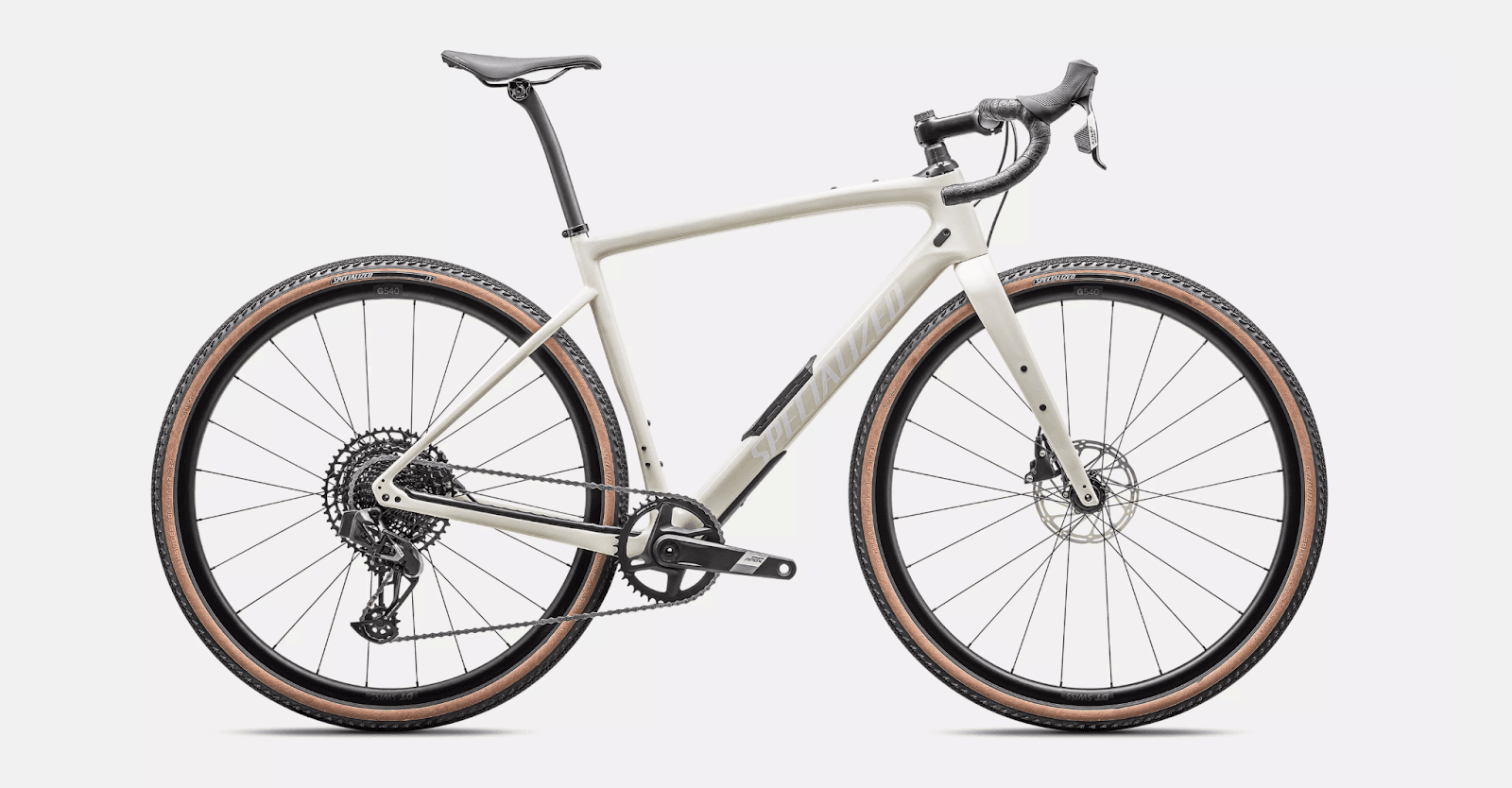
Best Budget Gravel Bike under €2,000
Cannondale Topstone Alloy 2—The Topstone Alloy 2 has Shimano GRX shifting, a smooth ride, and an innovative frame design, including a carbon fork that absorbs shock well.
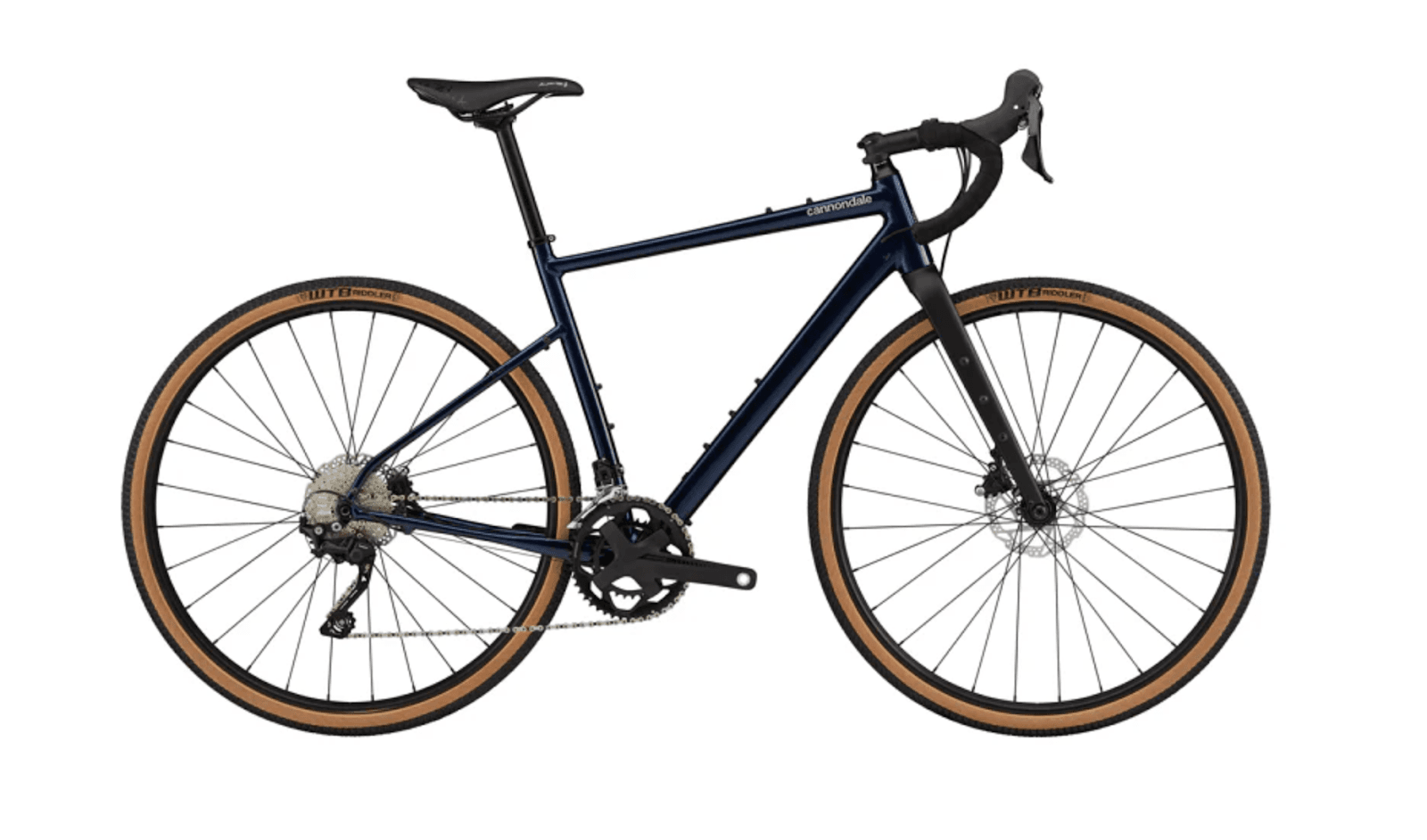
Best Electric Gravel Bike for Long Rides
BMC Roadmachine X AMP – A bit of a power boost for those who want one. This electric model gives you just enough power for long rides, hills or loaded touring. Endurance geometry, integrated power and a lightweight carbon frame keep the fun of riding and extend your range.
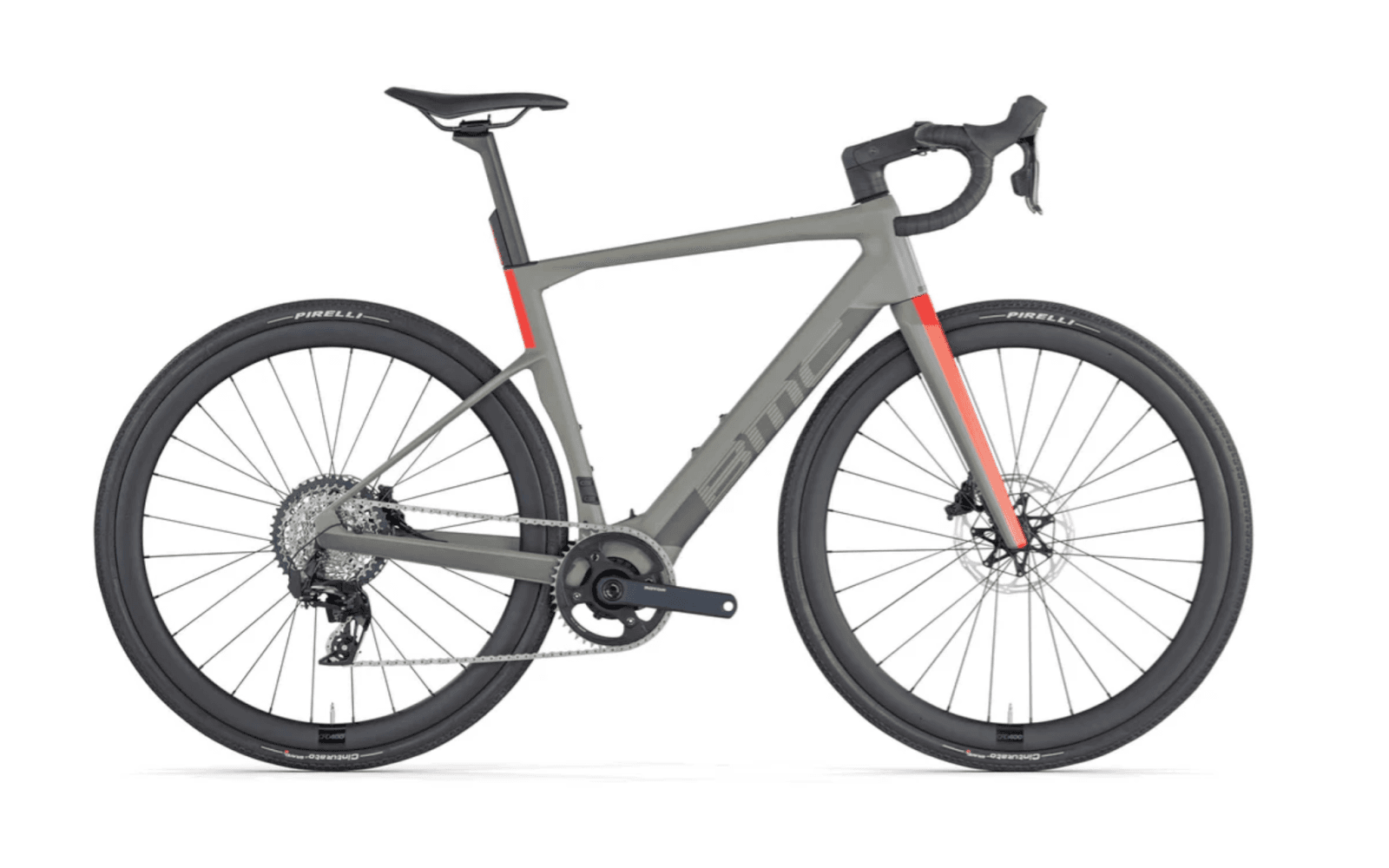
Best Gravel Bikes for Beginners
If you're new to gravel riding and don't know what gravel bike to buy, here's the thing: you don't need the lightest carbon race bike or the most rugged touring gravel bike, but a bike that's easy to handle, reliable, and good value for money. These bikes provide a balance between comfort, stability, and versatility without overwhelming you with high-end features or a hefty price tag.
Look for:
- Endurance geometry for a relaxed fit
- Bottle and bag mounts
- Wider tyres for grip and confidence on gravel
- A carbon fork (or a good alloy) to lessen vibration
- Mechanical disc brakes
- Price point around €1,000–€1,800
A beginner can use any gravel bike, but choosing one that's not too aggressive or race-focused will make for a smoother transition into off-road riding. Models from established gravel bike brands like Giant, Cannondale, Canyon, and Trek often have good entry-level builds with upgrade potential down the line.
Gravel Bike Sizing & Fit Guide
How to Measure for the Right Gravel Bike Fit
Getting the right size is key to comfort and efficiency. Use your height and inseam as the starting point, but also consider reach and stack — two critical measurements for how your bike handles and feels. Most brands have size charts, but it's always worth checking geometry tables and comparing across models. A proper fit prevents injury, improves handling and makes long days in the saddle far more manageable and enjoyable.
Adjustments to Improve Comfort and Handling
Once you have the correct frame size, minor adjustments can make a big difference. Swap stems for better reach, adjust saddle height and tilt or try different bar widths to match your shoulder width. Wider tyres at lower pressures can also improve comfort and grip, especially on gravel. Don't forget the cleat position and padded or double bar tape — even the small details can affect the feel of your ride.
Essential Accessories
Choosing the bike is only part of the adventure. To fully enjoy tackling gravel terrain with confidence, equipping your bike with the right accessories is essential. Whether you're heading out on a quick off-road spin or embarking on a multi-day bikepacking trip, these items will keep you prepared, comfortable and safe.
Tyres & Tubeless Setups – Which Setup is Best for Gravel?
One of the most essential accessories is the tyre setup. The right tyres give you grip, comfort and puncture protection. Tubeless tyres have become the gold standard. By eliminating the inner tube, tubeless setups allow you to run lower tyre pressures, which gives you more traction and smooths out bumps. They're also less prone to punctures, as the sealant inside the tyre fills small holes as the wheels turn.
If you're wondering how to choose a durable and efficient setup, tubeless is the way to go. Most have tubeless-ready gravel wheels, making the switch easier than ever. However, tubeless setups require more maintenance and initial setup skills. If you're new to off-road riding, high-quality clincher tyres with inner tubes are a reliable option until you're ready to upgrade.
Bikepacking Gear – Storage Solutions for Long-Distance Rides
For those planning extended tours or multi-day adventures, fitting your adventure gravel bike with the proper storage is essential. Bikepacking gear typically includes frame bags, handlebar rolls, seat packs, and top-tube pouches.
These bags allow you to carry essentials like tools, spare parts, food, water, and camping gear without needing bulky racks. This keeps your bike nimble on technical trails, preserving that lightweight feel many riders seek in the best lightweight gravel bikes.
Look for waterproof or water-resistant bags with secure fastening systems that won't shift on bumpy terrain. Remember to balance weight distribution to maintain comfort and control, especially when riding challenging terrains.

Safety & Visibility Gear – Lights, Mirrors, and Reflectors
Riding on mixed surfaces often means sharing roads with vehicles or cycling during low-light conditions. Investing in high-quality safety gear is non-negotiable. Front and rear lights designed for cycling offer powerful illumination and visibility, ensuring drivers and other riders alike see you. Many models often include rechargeable batteries and various flashing modes to suit different riding conditions.
Mirrors can be handy on narrow lanes and busy roads, allowing you to be aware of traffic behind you without turning your head. Reflectors on your bike and clothing add extra visibility, especially at dawn, dusk, or in poor weather.
Basic Tools & Maintenance Kits – Must-Have Repair Essentials
Resolving minor mechanical problems is crucial for uninterrupted off-road and remote gravel rides. A compact multi-tool with Allen keys, screwdrivers, chain tools, and tyre levers is essential. A mini hand pump or CO2 inflator and spare tubes or a patch kit are also crucial for dealing with flats.
Some riders add a small chain lubricant and cleaning wipes to their kit, helping maintain drivetrain performance during long rides. Learning basic maintenance skills will boost your confidence and ensure your bike stays in top shape for years.
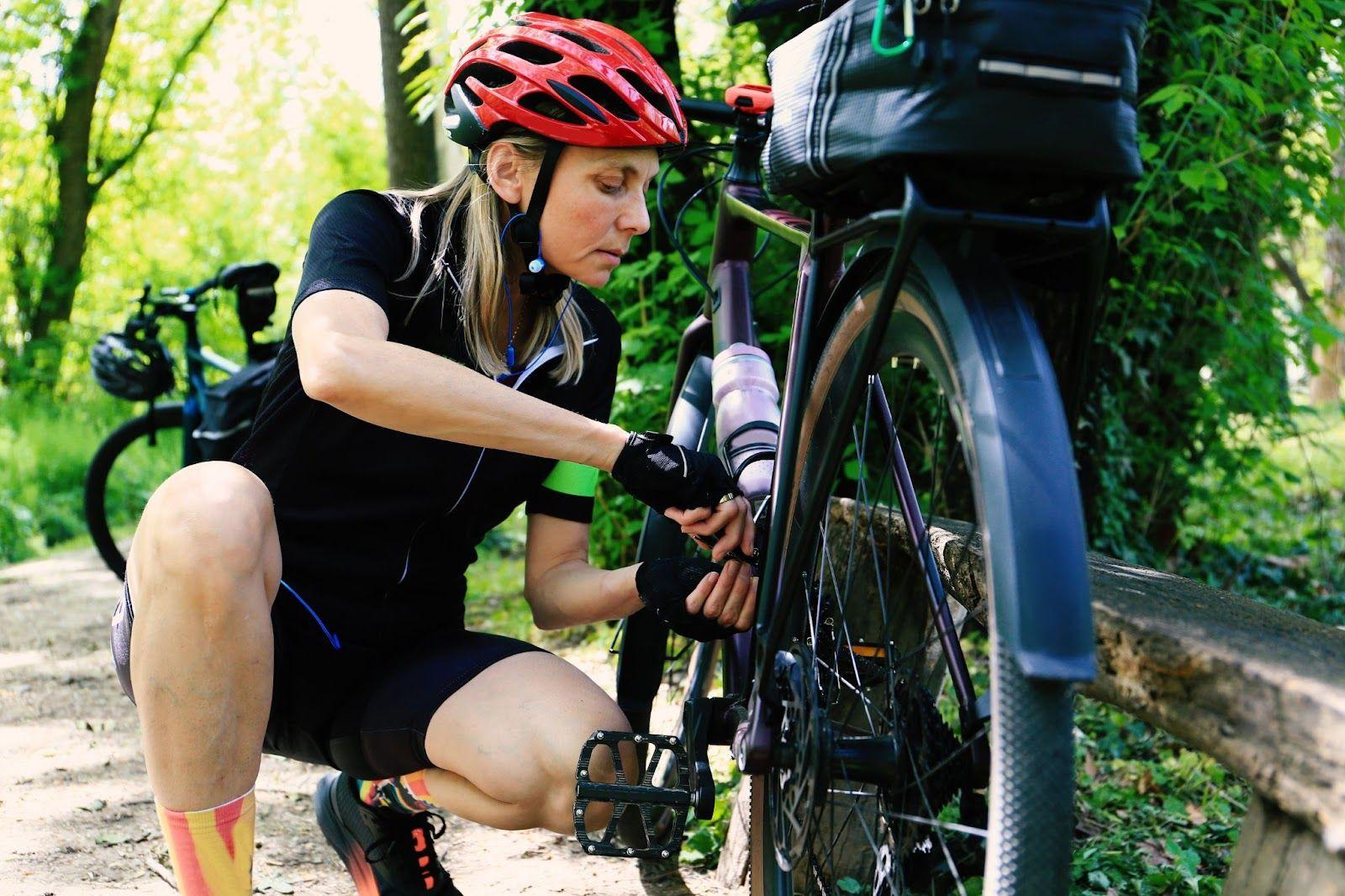
Gravel Bike Maintenance & Longevity Tips
Cleaning and Maintenance
Gravel bikes accumulate more mud, grit, and water than your average road bike, so cleaning is essential. Rinse off after every ride, especially the drivetrain, brakes, and bottom bracket. Use a bike-specific degreaser and soft brush to clean components, and finish with a light re-lube of the chain. Don't use high-pressure hoses. They can force dirt into bearings and strip away grease. Instead, use a gentle hose or bucket and sponge. A clean bike not only looks better but also rides smoother and lasts longer.
Drivetrain Maintenance – Keeping Your Chain and Cassette in Top Shape
Your drivetrain endures the rough demands of gravel riding. Check your chain regularly for stretch and wear, and clean it often. Depending on where you ride, apply a high-quality lubricant for wet or dry conditions. Check your cassette and chainrings for wear. Hooked teeth or inconsistent shifting mean it's time to replace them. Keeping everything aligned and tensioned prevents premature wear and efficient pedalling.
Brake Adjustments & Pad Replacements
Gravel riding involves a lot of braking on loose surfaces. Check your brake pads for wear and replace them if they're getting thin or noisy. Also, check that your rotors are clean and not warped. A slight rub can often be fixed with calliper alignment, and hydraulic systems may need occasional bleeding to maintain performance.
When to Upgrade Components for Better Performance
Instead of buying a new bike, consider targeted component upgrades for enhanced performance. Switching to tubeless tires, upgrading wheels, or installing a lighter crankset can increase speed and control on longer rides. Replacing the saddle or seatpost with carbon versions can also improve comfort. Prioritise upgrades that match your riding style and typical terrain to maximise their impact and value.
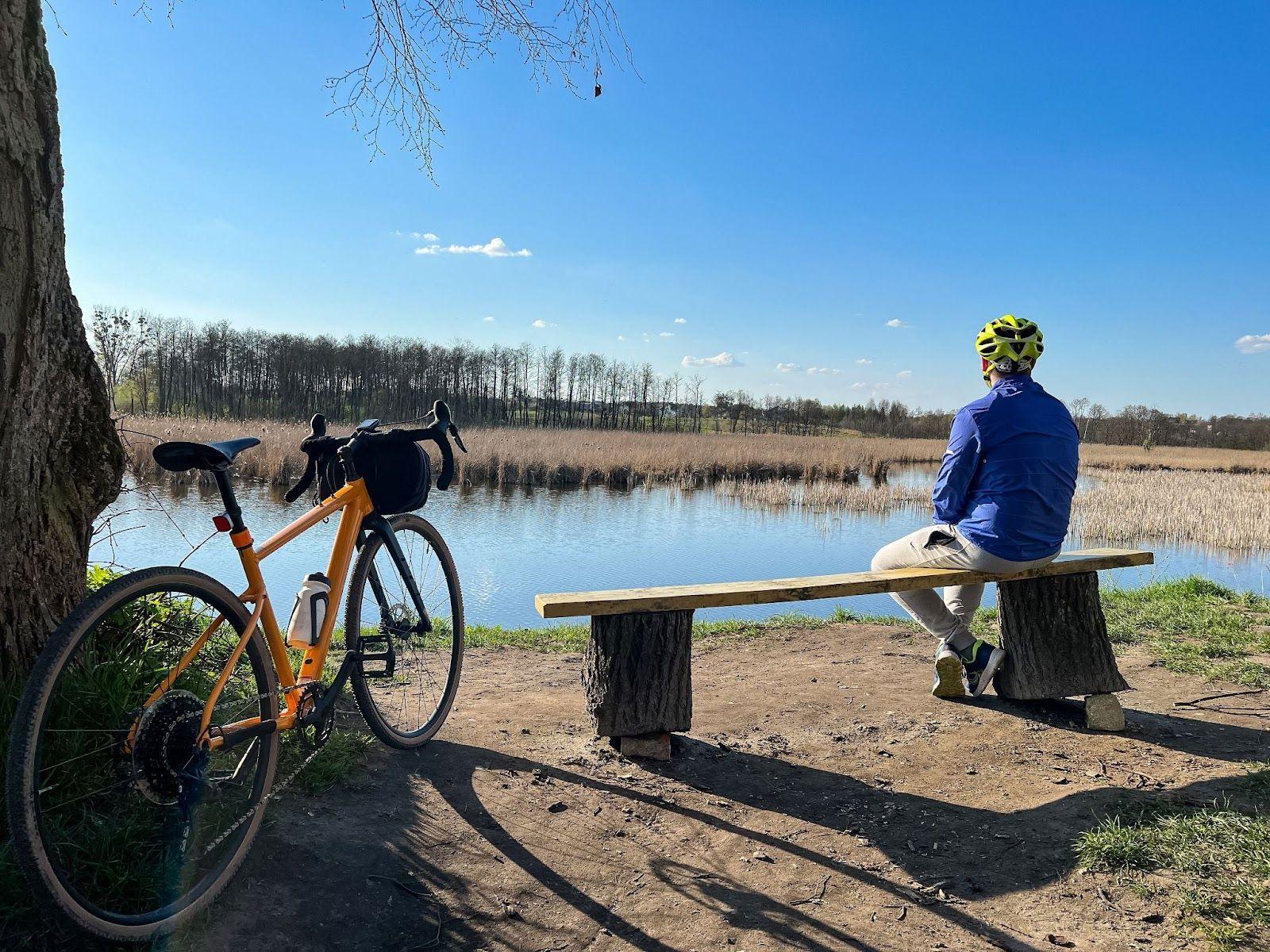
Final Thoughts: Find Your Gravel Bike
Gravel biking has evolved into a significant cycling experience. Whether your goal is long-distance riding, commuting, or exploring varied terrain, a gravel bike can meet your needs. These bikes are appealing not only for their versatility but also for the enhanced connection they offer with the surrounding environment. They make you slow down, take the less-travelled road, and enjoy the journey as much as the destination.
Finding the right one might take some searching and testing, but it's worth it. Once you've found 'the one', a good gravel bike doesn't just fit your body, it fits your lifestyle. It becomes part of your weekend plans, your early morning escapes, your big ride dreams. And as manufacturers continue to evolve their offerings, there's never been a better time to see where these bikes can take you. So go ahead — gear up, roll out and enjoy.
